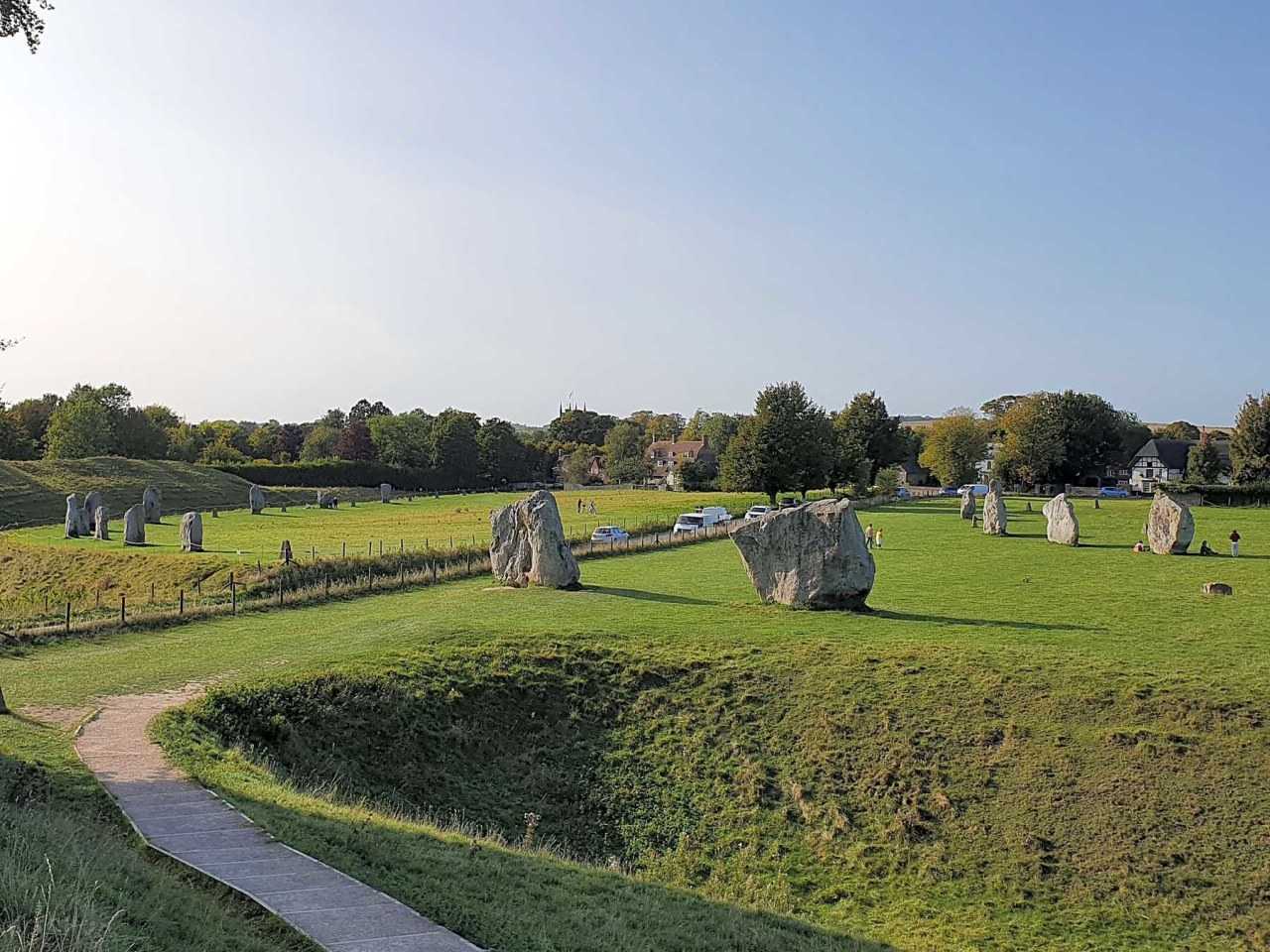Pitchup's Guide to Wiltshire's World-Class Heritage Sites: Stonehenge, Avebury & more
Deep in rural South West England, the county of Wiltshire is a rather special spot. Many travellers come to this part of the world to appreciate the undulating landscape and to find some peace and quiet, but among these hills there’s an array of world-class heritage waiting to be explored.
Often, Wiltshire’s landmarks stick out like a sore thumb (we’re looking at you, Salisbury Cathedral), while at other times you’ll need to know where to look and what to look for before you get that lightbulb moment.
Whether you’re a card-carrying member of English Heritage or are new on the Neolithic scene, sit back, relax and stick on some sensible footwear as we take you on a tour of Wilshire's world-class heritage.

1) Stonehenge
First up, it’s Stonehenge near Salisbury, the undisputed big daddy of Wiltshire’s historic sites. When you first look at it, it’s hard to think about anything except the sheer primaeval power of these stones. After a while, though, the questions start: how did these hulking great rocks get here? What exactly was it all for? And, perhaps most importantly, how on earth did they get planning permission?

Stonehenge (along with Avebury, the next site on our list) is part of Wiltshire’s UNESCO World Heritage site, which just goes to show how important this strange stone circle has been to so many people over the centuries. The site is managed by English Heritage and is open to the public daily.
If you’d rather not pay the entrance fee and want to see Stonehenge for free, there are a number of trails and footpaths with great views available in the local area. On the opposite end of the spectrum, if you’re happy to pay a bit extra to get closer to the stones, you can book onto a guided tour of the inner circle before and after the general public have access to the site (book well in advance to avoid disappointment).
2) Avebury
While Stonehenge is the most recognisable stone circle in the world, to see the biggest you’ll need to head to Avebury, a small Wiltshire village near Devizes with just as much prehistoric prowess as its big brother to the south.
Avebury henge was built during the Neolithic period and is made up of a huge circular bank and ditch and three separate stone circles. Most of the stones were re-erected in the first part of the 20th century thanks to the painstaking efforts of Scottish archeologist Alexander Keiller, whose life you can learn about in a dedicated museum in the village.
Avebury henge is free to enter and is managed jointly by English Heritage and the National Trust. While in the village, make sure to also see some of the other Neolithic and Bronze Age monuments that are also part of the UNESCO-listed Stonehenge, Avebury and Associated Sites, including West Kennet Long Barrow, The Sanctuary and Silbury Hill, the largest artificial mound in Europe.

3) Salisbury Cathedral
While our next monument hasn’t stood for thousands of years, it’s still gorgeous, packed with history and is very, very old.
Built between 1220 and 1320, Salisbury Cathedral stands proudly in the centre of Wiltshire’s only city and can be seen for miles around thanks to its 123-metre-tall Early Gothic spire, the tallest in all the United Kingdom.
Salisbury Cathedral boasts a number of top-tier features, including the largest cathedral close and cloister in Britain and the best-preserved remaining copy of the Magna Carta. It’s also home to what is widely believed to be the oldest mechanical clock in the world – not bad when you consider that it has other world-class monuments like Stonehenge and Avebury to compete with right on its doorstep…

4) Wiltshire’s White Horses
Last, but by no means least, we have the eight huge White Horses that can be seen on Wiltshire’s hillsides.
Much of Wiltshire is covered by chalk downland, a rare habitat that’s a haven for butterflies and wildflowers. Around 250 years ago, local farmers also realised that when you dig just beneath the topsoil, it can look pretty striking too.
The oldest White Horse in Wiltshire is in Westbury, where it has stood on a hillside overlooking Bratton Down for over 250 years. According to local lore, this chalky steed comes to life at night, when it canters down to the river to get some much-needed hydration after guarding the surrounding farmland all day. Marlborough and Devizes also have impressive and easily-accessible hill figures that are well worth visiting.
Although it’s a spring chicken compared to age-old Stonehenge, the exact origins and significance of many of these White Horses have been lost in the mists of time. Some believe that the figures were inspired by much older imagery, perhaps harking back to Viking days. Others argue that they celebrate the House of Hanover, whose equine emblem was a patriotic symbol throughout much of the 18th century.

Ready to see something new?
Gallivanting through the countryside in search of ancient relics is easy if you book a campsite or glampsite in Wiltshire. We’ve got sites near Stonehenge and Salisbury Cathedral as well as rural pub sites close to Wiltshire’s best White Horses.
Already visited the four historic sites above? Check out six more Wiltshire heritage sites here or check out our list of things to do in Wiltshire with all the family, many of which have an interesting historic element.
Roaming further afield? You'll find plenty of ideas for attractions, days out, beaches and walks in our camping guide to South West England.